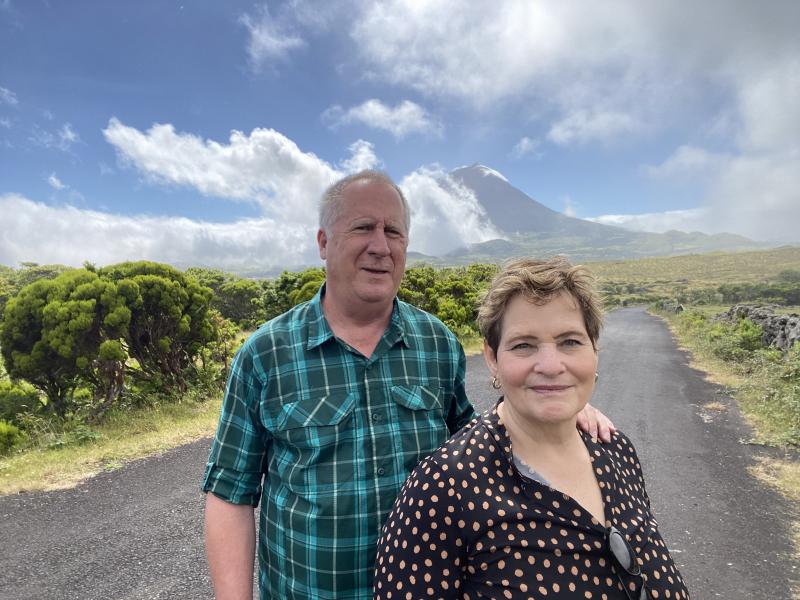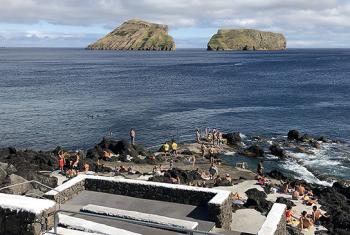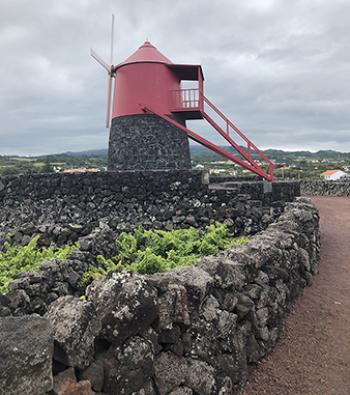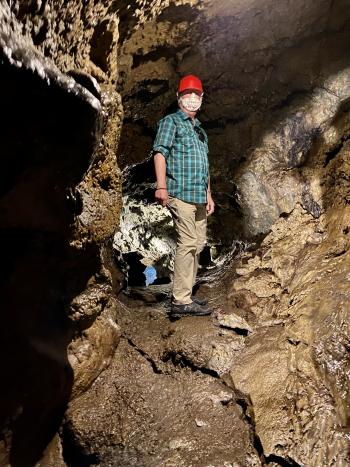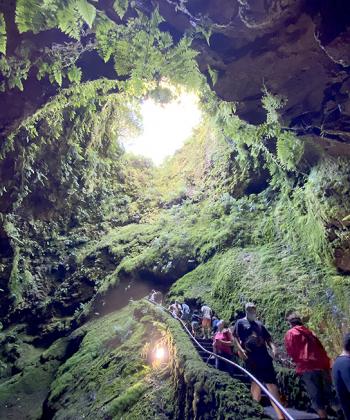Post-vax trip to the Azores
This item appears on page 12 of the December 2021 issue.
For our second post-vaccination trip (the first was to Egypt and Jordan [Aug. ’21, pg. 10]), my wife, Susan, and I chose the Azores, a mid-Atlantic archipelago that is an autonomous region of Portugal. We liked the idea of visiting a temperate climate during a hot summer.
The only nonstop flights from the East Coast to the Azores were via Boston on Azores Airlines (www.azoresairlines.pt), so we decided to drive to Boston and later do a post-Azores New England road trip.
Our round-trip airfare was $1,845. Our flight from Boston to Ponta Delgada, Azores’ capital on São Miguel Island, took about 5½ hours. This was on July 21, 2021, and we had a 2-hour layover before continuing to Pico Island.
Technically, to fly to the Azores, you only had to fill out a health questionnaire online; no PCR COVID-19 test was necessary prior to leaving the US. However, if you decided to travel with a PCR test in hand, you could upload your test with the health questionnaire and breeze through into the country following a green line on arrival. If you hadn’t gotten tested before leaving the US, you followed a blue line and got tested at the Ponta Delgada airport, then waited in isolation for the test results (within 24 hours).
The fact that people could fly without a test prior to the flight was a bit nerve-racking, as more than a few passengers were coughing and blowing their noses.
The fine print was confusing, so Susan and I just got our PCR tests at a testing site the day before our trip and uploaded the (negative) results. What we didn’t know was that, if you uploaded your results, the Azores government would send you a €35 voucher via email. We used our two vouchers to pay for a tour we had already booked. In essence, it was about $80 in found money.
We also heard that procedures were changing almost weekly, so by the time this write-up is printed, rules will likely be completely different. The airline was very good at providing the latest information, but it was still a bit confusing and overwhelming. The best guidance is vaccinate and always get tested before traveling.
Every seven days while in the Azores, travelers each had to get a new PCR test, which was free. However, since we were only there six days, we had to make a reservation at a clinic and pay €75 each for a PCR test in order to be allowed to return to the US. (We again tested negative.)
•
For our Azores visit, we wanted to focus on food and wine and initially picked a 2-island trip, to Pico and Terceira.
When we arrived, our hotel in Pico wasn’t ready for us, so we decided to take a short ferry ride to another island, Faial. A web search led us to Trilhos R (phone +351 961 617 201, www.trilhosr.com/en-gb) and the guide Ramiro Paz.
We had a fantastic tour of this small island. Ramiro specializes in hiking people down into a major caldera. Not being hikers, we simply enjoyed the scenery and learned about the numerous volcanoes on the island. The cost for a 4-hour tour was €100 (near $115).
The next two days, we toured Pico with Terralta Nature Tours (phone +351 938 972 678, www.terraltanaturetours.com/en). Our guide, and the owner of the company, was Filipe Ferreira. He offered a number of tours, but we opted for a full-day food-and-wine tour, which lasted from about 10 a.m. to 6 p.m.
This private tour cost $150 per person, and we booked the same tour again the next day, as Filipe promised two entirely different tours. He didn’t disappoint!
We visited historic wine-making locations and wine-tasting rooms and had two fabulous lunches, enjoying local specialties with wine. We also toured a bit of the beautiful interior of the island. We could have spent more time on Pico.
•
Our next stop was Terceira Island, where we booked the “Snorkeling Experience in Terceira, Azores” tour through Viator (www.viator.com) at a cost of $107 for the two of us.
Our guide, Pedro, of Sea Adventures, picked us up at our hotel and took us to two spots to swim. The water was a bit chilly, but (having researched the sea temperatures before the trip) we had brought shorty wetsuits, making the swim fun. We saw many species of fish. All around the island, there were numerous concrete walkways providing easier access to the ocean for swimming, sunbathing or snorkeling.
We then took a half-day group tour of Terceira with Angratravel Tours (Angra do Heroísmo, Terceira Island, Azores; www.angratravel.net/home), at a cost of €70 for the two of us. Our driver/guide was Antonio, who was great.
The first of three principal stops was Gruta do Natal, the Christmas Cave, where we descended into a lava tunnel and explored where lava had flowed underground. (Before COVID, there used to be ceremonies in the cave at Christmas, hence the nickname.)
The second main stop was Furnas do Enxofre. Frankly, this is a bit underwhelming if you have ever visited other places around the globe where sulfur and mud are seeping out of the ground.
The third stop was Algar do Carvão, a volcano you visit from the inside. The lava chimney reminded me of cenotes in Mexico, just much deeper — nonetheless, impressive.
We made a number of unscheduled stops as well.
For our second day on Terceira, we took a full-day, private food-and-wine tour, also with Angratravel Tours and Antonio. Including food, the cost was €180. We circled the island and explored a bit of its principal city, Angra do Heroísmo.
Unfortunately, we found this tour underwhelming. For food, there was just one stop, and it was at what we would call a tourist restaurant. At noon, all of the tables were occupied by groups with guides, some groups of 12, some with only two, like ours, all being served the same dishes. We wanted more authenticity by eating with locals.
Also disappointing — the wineries were not accepting visitors, presumably due to COVID.
•
For our last day in the Azores, we took a morning flight back to Ponta Delgada and arranged to be picked up at the airport by a guide we found through Toursbylocals.com, Leon A. The cost for our 4-hour tour of the city and the surrounding countryside of São Miguel was $101.
Ponta Delgada is a beautiful city with a rich seafaring history, and the views were wonderful after leaving the city as well, with many lakes and small villages.
After our tour, Leon dropped us off at the airport for our return trip. Susan and I arrived back in Boston on July 28.
Everywhere we went in the Azores, compliance with COVID protocols was amazing, from wearing masks to washing hands. If anyone touched our passport or credit card, they immediately used a hand sanitizer. All our guides, waiters, hotel staff, etc., wore masks unless they were outside. We were very impressed.
NORMAN DAILEY
Alexandria, VA

